- europages
- >
- COMPANIES - SUPPLIERS - SERVICE PROVIDERS
- >
- laser in
Results for
Laser in - Import export
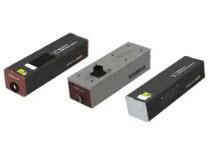
MATTHEWS MARKING SYSTEMS
Germany
The Matthews’ 10 watt and 30 watt C02 laser coding system permanently marks coated paper, plastics, rubber extrusion, and glass—making it ideal for a variety of industries. An affordable alternative to small character inkjet technologies, it cleanly marks alphanumeric text, date and time codes, serial numbers, barcodes, 2D codes and graphics.
Request for a quote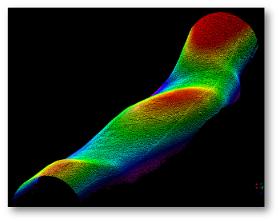
QUELLTECH GMBH
Germany
Particular Challenges: In the course of the production, endless cables are running at a considerable speed, and supervision has to be carried out nearly under real-time conditions. The size of the objects to be determined, i.e. of the flaws to be discovered, is in the range of only some hundredths of a mm. Another difficulty is the fact that surfaces with very different reflectivity and roughness are involved. In order to be able to check the cables all around, several laser scanners must be in place, mounted at different angles, thus covering the entire range of 360°. Quelltech Solution: The solution consists in a configuration of four Q6 laser scanners, mutually displaced by 90°, so the entire surface of the cables is in the field of view. On the basis of the 100% inline inspection, the position of defects can precisely be determined, without losing too much time.
Request for a quote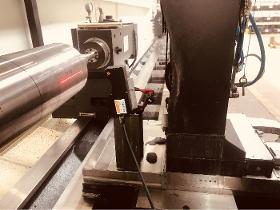
QUELLTECH GMBH
Germany
Defects to be examined in this application are very small, their size is often lower than 0.5 mm – hard to discover by human eye. Rework in the course of the production of the final product however, proves to be complicated and expensive. Large rolls with a diameter of 2 m and a length of 10 m are very difficult to remove and to reinstall. In order to avoid corresponding inconveniencies, it is essential to support the manufacturing process of the rolls themselves by a reliable quality control in the form of an automated final inspection.As the Quelltech Q6 laser scanner features an extremely precise resolution of 4096 Pixels/Profile at a high scan rate, this model proved to be able to meet the requirements and was mounted onto the positioning stage of the grinding machine. Furthermore, an industrial measurement computer was added, used for the analysis software of the point cloud. On the basis of this configuration, the entire roll surface could be recorded on a helical path.
Request for a quote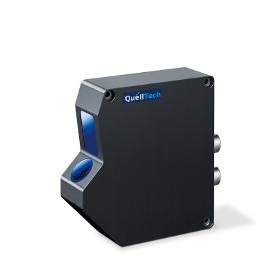
QUELLTECH GMBH
Germany
The new QuellTech Q5 Laser Scanner Series combines the advantages of small form factors with both high resolution and scan rate. The sensor disposes of different set-up possibilities with respect to the analysis algorithm. Measurement results are delivered via Ethernet, calibrated in the X / Z plane. Special adjustable algorithms can be selected, extremely useful particularly also for optically most demanding surfaces. Time-consuming calibration tasks for the user are no more required, as the calibration routine runs on board. High Scan Rate with up to 14,000 Profiles per Second Due to an appropriate limitation of the image range (AOI) in X and Z direction, the scan rate could considerably be increased. High resolution and detection frequency with up to 14.000 profiles and 28 Mio. points per second •X measuring range from 10 to 1022 mm •Z measuring range (height) from 5 to 878 mm •Laser wave length blue 405/450nm, red 650nm
Request for a quote
QUELLTECH GMBH
Germany
Particular Challenge: For the assessment of rotating parts, numerous parameters have to be taken into consideration: Concentricity, radial run-out and axial run-out (i.e. wobble); furthermore thickness, diameter, planarity and the absence of surface defects had to be examined. The solution developed by QuellTech consists in a configuration of three Q6 Laser Laser Scanners.Each of the lateral surfaces is assigned to its own scanner. In order to enable the thickness precisely to be determined, both laser lines are mutually oriented in opposite direction. The third scanner inspects the outer circumference of the wheel, this way measuring diameter and radial run-out. All of these scanners are subject to encoder signals supplied by the rotary axis and synchronously triggered, so possible defects on the wheel can precisely be localized. The measurement takes place at a resolution of ca. 30 µm, and a cloud comprising several millions of points are obtained.
Request for a quote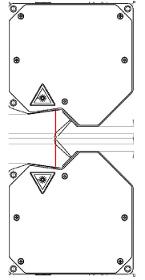
QUELLTECH GMBH
Germany
Many materials cannot be measured tactilely, therefore non-contact thickness measurements become necessary. Especially e.g. with glowing materials, or wet processes, a continuous tactile measurement is nearly impossible. Furthermore, web speeds in plant engineering and production have increased, requiring a corresponding fast sampling rate of the measuring systems. In addition, high measuring widths are often required. Why is contact free measurement technology so perfect for this application? Can be used in any web width, Scalable measurement thicknesses from a few millimetres to several meters, Thickness and coating thickness can be measured for different materials, Vibrations of the web materials, can be compensated, Turnkey solution for mechanical engineering, Non-contact and non-destructive measurement method, Large distances to the measured object are possible, Measurement of free forms,
Request for a quote
QUELLTECH GMBH
Germany
The QS View software package is intended for dimensional control in 2D or 3D QS-View 2D / 3D software for all measuring tasks 3D representation of an irregular body for determination of volume and weight. With the 2D / 3D software a wide variety of parameters can be processed and displayed, e.g. length, width, angle height, gap, presence, volume (resp. weight), seam geometry (height, width), gap dimensions. Due to the modular structure of the software, customized specialties can be added any time. Each module delivers the results to an individual output module. The universal SPC interface allows simple connection to S7 controllers via Ethernet. 2D / 3D software developer kits are available for integrators with corresponding knowhow.
Request for a quote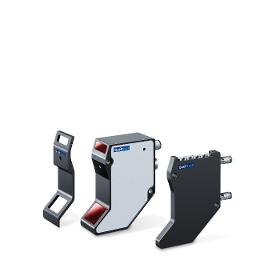
QUELLTECH GMBH
Germany
The QuellTech laser sensor family Q4 or Q5 used for these tasks is generally mounted on an arm of a rotational axis, to scan along the complete 360° angle of the internal surface in a sequence of strips. The Q4 sensors can also be used to control the weld seam tracking itself for rapid setup and ease of use. Even during a project, the range and scope of the Q Series sensor demonstrates the advantages of a modular system to quickly adapt to project needs, where the smallest system has provided fast analysis of pipes as small as 105mm. The low power, with standard communication protocols, enable battery powered systems to transmit wireless data to other systems for review and cloud back up.
Request for a quote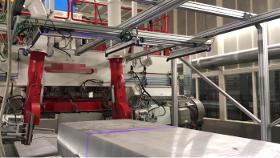
QUELLTECH GMBH
Germany
Particular Challenges of the Application: By tactile equipment, determination of the deepest point on a rough metal surface is neither simple or precise. As a consequence, often either too much material is removed, or the surface is still covered with defects which have to be eliminated by a following milling cycle. The equipment is arranged in parallel, so that the complete width of the slabs is covered. The sensors are calibrated to a common coordinate system and mounted on a movable gantry. Before measurement, the slabs are fixed in place. The scanners mounted on the gantry are guided over the measuring object, driven by an electric motor. The point cloud recorded by the four scanners is consolidated in a PC by means of the QuellTech image processing software which calculates the difference between highest and lowest point of the corresponding surface and compensates for possible inclination of the slab (detrending).
Request for a quote
MICRO-EPSILON
Germany
The new thicknessSENSOR opens up diverse application possibilities in terms of non-contact thickness measurement. The sensor operates with high precision and enables fast commissioning as well as ease of use. The thicknessSENSOR is a fully assembled system for non-contact thickness measurements of strip and plate material. The system consists of two displacement sensors that are fixed opposite to each other on a frame and measure against the target from both sides. The material thickness is detected according to the difference principle and calculated using an integrated evaluation unit. The measurement values are output as analog values via voltage and current or in digital form via Ethernet. Due to its extremely compact size, the sensor can also easily be integrated into restricted installation space. The intuitive web interface provides the new thicknessSENSOR with unique ease of use and enables the user to load individual presets for the respective measurement task. Up to eight
Request for a quote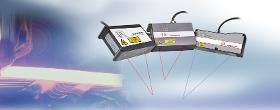
MICRO-EPSILON
Germany
Some measurement tasks require large measuring ranges or a large measurement distance from the target object to be measured. For these types of applications, Micro-Epsilon offers long-range laser sensors that combine high accuracy with a large measurement distance.
Request for a quote
MICRO-EPSILON
Germany
The optoNCDT BL models are equipped with a blue laser diode and are used when standard sensors with a red laser diode are operating at their performance limits. Due to its shorter wavelength, the blue laser does not penetrate the target surface, projecting a small light spot on the surface and therefore providing stable and precise results. As Blue Laser sensors are equipped with a special filter, they are insensitive to highly emitting objects such as glowing metals. Blue Laser sensors are preferably used with measurements on organic and (semi-)transparent objects, as well as for red-hot glowing metals.
Request for a quote
MICRO-EPSILON
Germany
The optoNCDT 1900 offers a unique combination of speed, size, performance and application versatility for displacement, distance and position measurements. This compact triangulation sensor achieves a high measurement accuracy and measuring rates of up to 10 kHz. The high-performance optical system generates a small light spot which enables to even detect the finest of details and structures reliably.
Request for a quote
MICRO-EPSILON
Germany
The optoNCDT1420 offers a unique combination of speed, size, performance and application versatility for displacement, distance and position measurements. The compact triangulation sensor achieves a high measurement accuracy and measuring rates of up to 8kHz. The selectable connector type, i.e. cable or pigtail, together with compact size reduce the sensor installation effort to a minimum. Just like all triangulation sensors from Micro-Epsilon, the optoNCDT 1420 provides an intelligent surface regulation. The Active Surface Compensation (ASC) ensures stable measurement results regardless of changing surface colours or brightness. The high-performance optical system generates a small light spot which enables to even detect smallest components reliably.
Request for a quote
MICRO-EPSILON
Germany
The optoNCDT 1320 is a new laser triangulation sensor with compact size for displacement, distance and position measurements. Due to its extremely compact size including integrated controller, the sensor can also be integrated into restricted installation space. Its low weight make the optoNCDT 1320 ideally suitable for applications where high accelerations occur, e.g., on the robot arm or in pick-and-place machines. The optoNCDT 1320 offers high accuracy and adjustable measuring rates up to 4kHz. The Active Surface Compensation (ASC) provides stable distance signal control regardless of target color or brightness. Very small objects can be detected reliably due to the small measurement spot size.
Request for a quote
MICRO-EPSILON
Germany
The optoNCDT 1220 is the entry-level model for precise measurements in industrial automation. This compact laser triangulation sensor measures displacement, distance and position with high precision. Based on an excellent price/performance ratio, this sensor is ideally suited to measurement tasks involving a large number of pieces. Therefore, the sensor can be used in all fields of automation technology, e.g., in machine building, 3D printers or robotics.
Request for a quote
MICRO-EPSILON
Germany
The optoNCDT LL laser sensors produce an oval-shaped light spot of just a few millimeters in width which reminds of a short "laser line" (LL). This oval light spot compensates for inhomogeneous surface structures and the so-called "speckling" effect which particularly occurs with metallic surfaces. Combined with special software algorithms, interferences caused by surface roughness, defects, indentations or holes are filtered out. This enables stable and precise measurement results.
Request for a quoteDo you sell or make similar products?
Sign up to europages and have your products listed
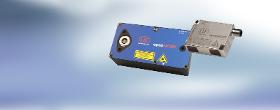
MICRO-EPSILON
Germany
Often, special requirements cannot be standardized. For this reason, we configure our sensors to your individual requirements. Modifications of the offset distance or measuring range, cable and connector variants and modifications to the housing and optical system are often required.
Request for a quote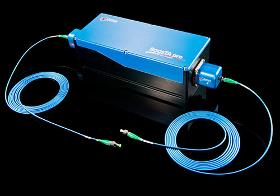
TOPTICA PHOTONICS AG
Germany
The BoosTA pro, TOPTICA’s new stand-alone optical amplifier, increases the output power of a DL pro or any other linearly polarized master laser by up to 20 dB (x100). Following TOPTICA’s well-established pro-technology, the TA chip is mounted in a compact unit with optimized heat management and beam-shaping optics. A compact, external power supply (DC HP) drives the amplifier head and allows effortless operation - even of current-hungry TA chips at wavelengths with lower gain. Researchers thus benefit from output power levels up to 3.5 W.
Request for a quote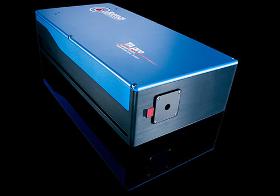
TOPTICA PHOTONICS AG
Germany
The TA pro is the flagship product of TOPTICAs high power tunable diode laser solutions. Its tapered amplifier technology allows for high power with excellent beam quality, while at the same time maintaining the favorable spectral properties of the pro master laser. The TA pro is a completely revised version of a very well-established laser system, the TA 100. It has been optimized for extreme stability and ease of use, and has proved these properties in numerous tests in TOPTICAs and customers´ laboratories.
Request for a quote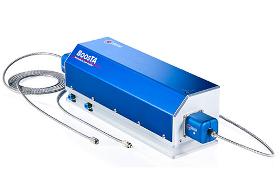
TOPTICA PHOTONICS AG
Germany
The BoosTA is a compact and economical optical amplifier. Just couple light into it, and it amplifies it up to a factor 100. The spectral properties of the master laser are preserved. The BoosTA includes computer controlled integrated electronics, and all optics for accepting a collimated and linearly polarized input beam. Custom optics and good thermal management guarantee best performance.
Request for a quote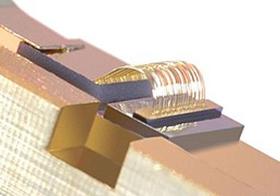
TOPTICA PHOTONICS AG
Germany
Tapered amplifier (TA) diodes combine the "best of both worlds": They amplify laser radiation into a nearly diffraction limited beam to powers that would destroy the facets of normal laser diodes. At the same time the spectral properties of the master laser are preserved. TOPTICA offers TA chips separately, but also integrates them into convenient laser systems (TA pro and BoosTA)
Request for a quote
TOPTICA PHOTONICS AG
Germany
Distributed feedback (DFB) laser diodes feature a grating structure within the semiconductor and thus operate in both longitudinal and transverse single mode. Tuning is achieved by modulating either the laser current or the chip temperature. Mode-hop free tuning is maintained over several hundred GHz. Applications include alkaline spectroscopy, laser cooling, gas detection and the generation of tunable cw terahertz radiation.
Request for a quote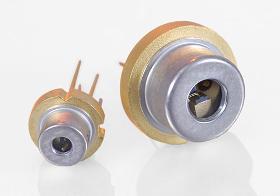
TOPTICA PHOTONICS AG
Germany
TOPTICA Photonics is the number one supplier for laser diodes, providing the widest and most continuous coverage available within the optical spectrum. Our laser diodes have been thoroughly examined in an external cavity diode laser configuration. Based on our extensive testing we can ensure the highest quality to our valued customers.
Request for a quote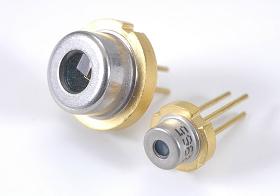
TOPTICA PHOTONICS AG
Germany
TOPTICA Photonics is the number one supplier for laser diodes, providing the widest and most continuous coverage available within the optical spectrum. Our laser diodes have been thoroughly examined in an external cavity diode laser configuration. Based on our extensive testing we can ensure the highest quality to our valued customers.
Request for a quote
TOPTICA PHOTONICS AG
Germany
The DLC pro Lock is a software license that enables a number of features on a specific DLC pro. These allow to control the frequency of a laser for example by using a saturated absorption spectroscopy setup with a reference cell. This most popular example of frequency typically uses a modulation of the laser frequency, a de-modulation (Lock-In) for creation of the error signal and PID regulators for the generation of the error signal. All this may be achieved with a DLC pro control without further electronic modules.
Request for a quote
TOPTICA PHOTONICS AG
Germany
The PID 110 is a proportional-integral-differential regulator for frequency stabilization of tunable diode lasers (DL pro, DFB pro). It accomplishes side-of-fringe locking to the slope of an atomic line or a cavity transmission peak. The module works both for HV (piezo actuators) and LV (laser current) control tasks. Users can adjust all relevant parameters, including P, I and D contributions, set point and regulator output range.
Request for a quote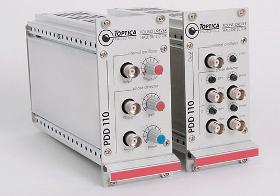
TOPTICA PHOTONICS AG
Germany
The Pound-Drever-Hall detector PDD 110/F serves to lock a diode laser to a maximum absorption or transmission of a reference medium (e.g. an optical resonator). The PDD 110/F features an internal HF modulation source for modulating the diode laser frequency. The signal from the reference is detected and demodulated phase sensitively to produce a high bandwidth dispersive error signal that can be used to lock the laser using a PID controller.
Request for a quote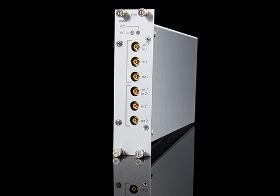
TOPTICA PHOTONICS AG
Germany
The Pound-Drever-Hall detector PDH is a built-in module of the DLC pro and serves to lock a diode laser to a maximum absorption or transmission of a reference medium (e.g. an optical resonator). The PDH features an internal HF modulation source for modulating the diode laser frequency. The signal from the reference is detected and demodulated phase sensitively to produce a high bandwidth dispersive error signal that can be used to lock the laser using a PID controller.
Request for a quoteResults for
Laser in - Import exportNumber of results
58 ProductsCompany type
Category
- Sensors (12)
- Laser - cutting and welding machines (11)
- Machine vision system (5)
- Monitoring and control equipment (5)
- Surface inspection systems (2)
- Optical measuring equipment (1)
- Measurement - Equipment & Instruments (1)
- Bending machine tools (1)
- Measurement equipment and instruments - position and distance (1)
- Printers - computer (1)